The Benefits of Green HVAC & Tech for Sustainable Living
Adopting green HVAC and technology is an effective way to achieve sustainable living. This approach not only benefits the environment but can also lead to significant savings and improved comfort in your home. As concerns grow over climate change and energy consumption, more homeowners are seeking ways to make their living spaces eco-friendly without sacrificing comfort or style.
Green HVAC systems incorporate energy-efficient technologies and eco-friendly practices to minimize energy consumption. Whether you’re upgrading your existing system or building a new home, understanding the benefits of these technologies can help you make better choices. Embracing green HVAC options can lead to a range of advantages:
Improved Energy Efficiency
Green HVAC solutions are specifically designed to use less energy. They achieve this through high-efficiency equipment and smart thermostats that optimize performance. This can lead to:
- Lower Utility Bills: By using energy-efficient systems, you can see a noticeable drop in your monthly energy costs.
- Long-Term Savings: Although the initial investment may be higher, the savings over time can offset these costs significantly.
- Enhanced Comfort: Many green technologies offer better temperature regulation, leading to a more comfortable living space.
Environmental Benefits
Switching to a green HVAC system contributes significantly to reducing your carbon footprint. Here are ways this change helps the planet:
- Less Energy Consumption: Energy-efficient systems consume less power, decreasing the burning of fossil fuels.
- Reduced Greenhouse Gas Emissions: By using renewable energy sources, you actively combat climate change.
- Use of Eco-Friendly Materials: Many green technologies incorporate sustainable materials in their designs, further enhancing environmental benefits.
Smart Technology Integration
Modern green HVAC systems incorporate smart technology. This aids homeowners in managing their energy usage more effectively.
- Smart Thermostats: These devices learn your habits and adjust the temperature automatically to maintain efficiency.
- Remote Monitoring: Monitor your system’s performance remotely, enabling quick action if issues arise.
- Integration with Renewable Energy: Systems can be designed to work with solar panels or wind energy, reducing reliance on nonrenewable sources.
Healthier Indoor Air Quality
Green HVAC systems often include advanced filtration systems that improve indoor air quality. Benefits of cleaner air include:
- Reduction of Allergens: Efficient filters trap dust, pollen, and other allergens that could affect your health.
- Decrease in Airborne Viruses: Enhanced ventilation systems help reduce the spread of viruses and bacteria in your home.
- Better Overall Well-Being: Fresh, clean air contributes to improved physical and mental health.
Increased Home Value
Investing in green HVAC systems can enhance your property’s market value. Potential buyers are increasingly looking for energy-efficient and environmentally friendly homes. Key points include:
- Market Demand: Homes with energy-efficient systems typically sell faster and for a higher price.
- Tax Incentives: Government incentives and rebates for installing renewable energy systems can further increase overall value.
| Type of Green HVAC System | Energy Efficiency Rating (SEER) | Potential Savings Annually |
|---|---|---|
| Geothermal Heat Pumps | 18-25 | $500 – $1,500 |
| Solar Air Conditioning | 15-25 | $300 – $700 |
| High-Efficiency Gas Furnaces | 90-98% | $200 – $500 |
Implementing green HVAC and tech is not just a passing trend; it’s a vital step towards a sustainable lifestyle. By choosing these innovative solutions, you can enjoy a host of benefits while contributing positively to the environment. For further insights and options regarding green HVAC technologies, check out Energy.gov or explore NYC.gov for essential information on sustainable practices.
Understanding Energy Efficiency in Heating and Cooling Systems
Energy efficiency in heating and cooling systems is crucial for reducing energy consumption and costs while promoting sustainability. By improving the efficiency of these systems, you can create a comfortable indoor environment without overstepping your energy budget. To understand how energy efficiency works for heating, ventilation, and air conditioning (HVAC) systems, it’s valuable to explore key components, ratings, and practices.
Key Components Affecting Energy Efficiency
Several components play an integral role in determining a heating or cooling system’s energy efficiency:
- Insulation: Proper insulation in your home prevents energy loss. Insulating walls, roofs, and floors can enhance the performance of your HVAC system.
- Windows: Double or triple-glazed windows offer better insulation than single-pane windows, reducing heat loss during cold months and heat gain during warm months.
- Thermostats: Smart thermostats allow you to program settings and adjust temperatures based on your schedule, leading to more efficient energy use.
- System Size: Choosing the right-sized system is crucial. An oversized unit will cycle on and off too frequently, while an undersized unit will struggle to meet your needs, leading to inefficiencies.
Understanding Efficiency Ratings
To evaluate the efficiency of heating and cooling systems, look for clear ratings:
- SEER (Seasonal Energy Efficiency Ratio): This rating measures the cooling output during a typical cooling season divided by the total electric energy input. A higher SEER rating indicates a more efficient unit.
- EER (Energy Efficiency Ratio): Similar to SEER, this metric demonstrates the efficiency of a cooling system at specific peak conditions.
- AFUE (Annual Fuel Utilization Efficiency): This rating applies to heating systems and represents the percentage of energy used from fuel to heat your home. A higher percentage signifies greater efficiency.
- HEAT PUMP EFFICIENCY: Heat pumps have their own efficiency ratings known as HSPF (Heating Seasonal Performance Factor) and COP (Coefficient of Performance), which assess their efficiency in heating mode.
Practices to Enhance Energy Efficiency
The right practices can greatly improve your HVAC efficiency:
- Regular Maintenance: Scheduled check-ups can ensure your system runs smoothly, preventing small issues that can lead to larger inefficiencies.
- Change Filters: Replace air filters regularly to maintain airflow and system efficiency. Clogged filters can strain your HVAC system.
- Seal Ducts: Inspect and repair leaks in ductwork. Air losses can account for a significant amount of energy waste in HVAC systems.
- Upgrade Equipment: If your system is old, consider upgrading to a modern, high-efficiency model. Newer units are designed with advanced technology to enhance energy efficiency.
Cost Considerations and Incentives
Investing in energy-efficient heating and cooling systems may have initial costs, but the long-term savings can be worth it. Many utility companies and government programs offer:
- Rebates: Cash discounts for upgrading to specific energy-efficient appliances.
- Tax Credits: Federal or state incentives that lower your taxable income when you invest in energy-efficient improvements.
- Low-Interest Loans: Financial assistance for making these improvements, which can be paid back over time.
Resources for Further Information
For more details about energy-efficient HVAC systems and related projects, visit the following resources:
Understanding energy efficiency in heating and cooling systems allows you to make informed decisions that enhance comfort while saving money and reducing environmental impact. By focusing on the key components, efficiency ratings, and proactive practices, you can significantly improve the performance of your HVAC systems.
Innovative Technologies Revolutionizing Green HVAC Solutions
As the demand for energy-efficient solutions continues to grow, innovative technologies are emerging to reshape the HVAC (Heating, Ventilation, and Air Conditioning) industry. These advancements focus on sustainability and minimize environmental impact while providing effective climate control. Let’s explore some of the groundbreaking developments that are revolutionizing green HVAC solutions.
Smart Thermostats
Smart thermostats are at the forefront of green HVAC technology. Unlike traditional thermostats, they allow users to control their heating and cooling systems remotely via smartphones or other connected devices. Features such as energy usage reports help you understand when and how much energy is consumed, allowing for adjustments that reduce waste. For instance, the Ecobee SmartThermostat also includes occupancy sensors, ensuring that energy is not wasted when no one is home.
Variable Refrigerant Flow (VRF) Systems
Variable Refrigerant Flow systems are a cutting-edge technology that offers energy efficiency and flexibility in heating and cooling. These systems use refrigerant as the cooling and heating medium, allowing for simultaneous heating and cooling in different areas of a building. This feature not only enhances comfort but also significantly reduces energy consumption. Companies like Daikin have pioneered VRF systems that adapt to real-time usage, optimizing energy use.
Geothermal Heating and Cooling Systems
Geothermal systems tap into the constant temperature of the earth below the surface to provide efficient heating and cooling. This technology exploits the ground’s natural insulating properties, eliminating the need for fossil fuels for climate control. Installation costs can be higher upfront, but long-term savings on energy bills make it worthwhile. Explore more about geothermal solutions from Ground Source.
Energy Recovery Ventilators (ERVs)
Energy Recovery Ventilators play a crucial role in enhancing indoor air quality while minimizing energy loss. ERVs capture the energy from outgoing stale air to precondition the incoming fresh air. This two-way exchange helps reduce the load on HVAC systems, saving energy and maintaining comfortable indoor environments. Manufacturers like Broan provide a variety of ERV solutions tailored for residential and commercial applications.
High-Efficiency Filters and Purification Systems
Advanced air filtration systems are essential in combating indoor pollution. High-efficiency particulate air (HEPA) filters, combined with ultraviolet (UV) light technology, can effectively remove pollutants from the air. These systems not only enhance air quality but also reduce the burden on HVAC systems, leading to lower energy consumption. Companies like Trane offer high-performance filtration solutions that integrate with existing systems.
Smart Building Technologies
Integrating smart technology into building management can significantly improve energy efficiency. Automated building management systems monitor and control HVAC systems based on occupancy, weather forecasts, and real-time energy prices. This integration allows for maximum efficiency and minimal waste. Companies such as Johnson Controls specialize in smart building technologies that optimize energy use.
The Benefits of Innovative Green HVAC Solutions
- Lower energy bills: Smart technology allows for better monitoring and efficiency.
- Reduced carbon footprint: Sustainable practices lead to less reliance on fossil fuels.
- Improved indoor air quality: Advanced filtration systems eliminate allergens and pollutants.
- Increased comfort: Customized systems provide tailored solutions for individual needs.
Future Trends in Green HVAC Technology
As we look ahead, the trend toward sustainability and energy efficiency will only grow stronger. Innovations such as AI-driven HVAC systems, which utilize machine learning to optimize performance, are on the horizon. Additionally, developments in solar-powered HVAC systems will further reduce reliance on non-renewable energy sources.
Implementing these cutting-edge green HVAC technologies can lead to a healthier living environment while contributing to a more sustainable future. With our environment in mind, these innovative solutions provide both comfort and responsibility. Explore more about green HVAC technologies on Energy.gov for insights into what lies ahead.
The Role of Smart Thermostats in Eco-Friendly Home Management
When managing an eco-friendly home, smart thermostats play a pivotal role. These innovative devices are not just about convenience; they are environmentally conscious tools that help reduce energy consumption and improve overall energy efficiency. Understanding how smart thermostats function can empower you to make better choices that contribute to a greener living space.
Smart thermostats come equipped with advanced technology that allows them to learn your habits. For instance, they can track when you are home and adjust the temperature accordingly. This learning capability means that you are not wasting energy heating or cooling an empty house. Instead of running your HVAC system at full blast when no one is around, a smart thermostat can help maintain a comfortable atmosphere when you need it while conserving energy when you don’t.
Another significant feature is remote access. With smart thermostats, you can control the temperature of your home from your smartphone, tablet, or computer. This perk comes in handy when you unexpectedly work late or head out for a weekend trip. Instead of leaving your heating or cooling system running, you can easily adjust it from anywhere, ensuring that you only use energy when it’s necessary.
Moreover, many smart thermostats integrate with other smart home devices. For example, they can work alongside sensors that monitor indoor and outdoor temperatures, humidity levels, and even occupancy. This interconnectedness allows for a more holistic approach to home management. When these devices work together, they can optimize your energy use even further by making real-time adjustments based on various environmental factors.
One of the standout benefits of using smart thermostats is their ability to provide detailed energy usage reports. These reports can inform you how much energy you spend on heating and cooling every month. By understanding your energy patterns, you can pinpoint opportunities for improvement, whether that means adjusting your thermostat settings or investing in better insulation. Such insights not only save you money but also promote a more sustainable lifestyle.
Fortunately, many current smart thermostat models are designed to be user-friendly and suitable for almost any home. Whether you have a traditional furnace or a modern heat pump, there is likely a compatible smart thermostat for your HVAC system. This adaptability means that most homeowners can benefit from this technology.
Below is a brief comparison of some popular smart thermostat models:
| Thermostat Model | Key Features | Energy Savings |
|---|---|---|
| Nest Learning Thermostat | Auto-schedule, remote control, energy usage reports | Average of 10-12% heating and 15% cooling savings |
| Ecobee SmartThermostat | Voice control, room sensors, energy reports | Up to 26% energy savings when using sensors |
| Honeywell Home T9 | Smart room sensors, geofencing | Average of 10-15% energy savings |
In terms of cost, smart thermostats might seem like a significant investment upfront. However, you can typically recoup this cost through energy savings over time. Many utilities even offer rebates for energy-efficient appliances, making the switch even more financially appealing. Additionally, smart thermostats can improve your home’s resale value, which is an excellent incentive when considering upgrades.
If you’re looking for a deeper dive into smart thermostat technologies, the U.S. Department of Energy provides excellent resources on how to make the most of your heating and cooling systems. Furthermore, companies like Ecobee and Nest offer detailed guides on their products and features to help you make an informed decision.
To truly embrace eco-friendly home management, integrating smart thermostats is essential. With their capacity to monitor, adapt, and report energy usage, these devices empower homeowners like you to make significant strides in reducing your carbon footprint while saving on utility bills. The journey to a sustainable home begins with informed decisions and smart technology.
How to Choose the Right Green HVAC System for Your Home
Choosing the right green HVAC system for your home can feel overwhelming, but it doesn’t have to be. With a few key factors in mind, you can select an environmentally friendly heating, ventilation, and air conditioning system that suits your home’s unique needs. Here’s what to consider:
Understand Your Home’s Needs
Every home is different. Before you choose a green HVAC system, assess your home’s size, layout, and existing insulation. This will help you determine the heating and cooling capacity required. Here are some aspects to evaluate:
- Square Footage: Consider the size of your home. Larger homes may need multi-zone systems.
- Insulation Quality: Good insulation can reduce energy loss, impacting system choice.
- Climate: Temperatures in your area can dictate the type of HVAC system you’ll require.
Types of Green HVAC Systems
Several options are available, each with its own advantages. Understanding these can help you determine which system is best for your household.
- Geothermal Heat Pumps: Utilize the earth’s temperature to heat and cool homes. These systems are highly efficient and environmentally friendly.
- Air Source Heat Pumps: Extract heat from the outside air for heating and reverse the process in warmer months.
- Solar HVAC Systems: Use solar panels to power air conditioning and heating systems, drastically reducing energy costs.
- High-Efficiency Furnaces and Boilers: Opt for models with high Annual Fuel Utilization Efficiency (AFUE) ratings to ensure minimal energy waste.
Energy Efficiency Ratings
When selecting your HVAC system, be sure to check the Energy Efficiency Ratio (EER) and Seasonal Energy Efficiency Ratio (SEER). These ratings indicate how well a system will perform:
| System Type | EER Rating | SEER Rating |
|---|---|---|
| Central Air Conditioning | ≥ 11.6 | ≥ 14 |
| Heat Pump | ≥ 12 | ≥ 14 |
| Geothermal System | ≥ 20 | ≥ 25 |
Look for Certifications
Certifications can provide reassurance that you are choosing an efficient and environmentally friendly system. Consider systems that come with:
- ENERGY STAR: Projects that meet strict energy efficiency guidelines set by the U.S. Environmental Protection Agency.
- Green Seal: Indicates eco-friendly HVAC products.
- LEED: Systems that will contribute towards LEED certification in sustainable building projects.
Seek Professional Guidance
Choosing a green HVAC system isn’t something you need to do alone. Consulting with a professional can provide insights tailored to your home’s specific situation. They can help with:
- Conducting a thorough home energy audit.
- Evaluating different systems and their costs.
- Determining the best installation practices to maximize efficiency.
Consider Long-Term Savings
Investing in a green HVAC system can lead to significant savings over time. While the initial cost may be higher, energy-efficient systems can reduce monthly utility bills. Be sure to factor in potential savings on:
- Heating and cooling costs.
- Maintenance and repair costs.
- Possible government incentives or tax credits for green energy systems.
For accurate information and assistance with green HVAC systems, you can visit Energy Saver or EPA Indoor Air Quality.
Choosing the right green HVAC system for your home involves understanding your needs, knowing the available options, checking energy efficiency ratings, and confirming certifications. Engaging professionals can help ensure that you make the most informed choice, leading to long-term savings and a positive environmental impact.
Cost Savings from Implementing Green Heating and Cooling Technologies
Implementing green heating and cooling technologies can lead to significant cost savings for both homeowners and businesses. By adopting eco-friendly HVAC systems, you not only contribute to a healthier planet but also enjoy reduced utility bills and maintenance costs. In this article, we explore how green HVAC and tech can save you money while maximizing comfort.
One of the primary advantages of green heating and cooling systems is their energy efficiency. Traditional HVAC systems can consume excessive amounts of energy, driving up your monthly bills. Green technologies utilize more efficient methods, such as geothermal heat pumps and solar panels, which can significantly lower energy usage. According to the U.S. Department of Energy, energy-efficient heating and cooling systems can reduce energy consumption by 30% to 50% compared to conventional systems.
Additionally, many government programs and local utilities offer incentives for using green HVAC technologies. These can include tax credits, rebates, and grants for installing energy-efficient systems, further reducing your upfront investment. Programs can vary by region, so it’s a good practice to check with your local energy provider for available options.
Now, let’s break down some common green heating and cooling technologies that can help you save money:
- Geothermal Heat Pumps: These systems tap into the earth’s stable temperature to heat and cool your home. They are typically more efficient than traditional systems, resulting in lower energy bills.
- Solar Heating and Cooling: Solar panels can capture energy from the sun to heat your water or home. While the installation can have initial costs, the savings on energy bills can be significant over time.
- High-Efficiency Air Conditioners: Look for units with a high Seasonal Energy Efficiency Ratio (SEER). The higher the SEER rating, the more energy-efficient the system. This could lead to substantial savings in cooling costs.
- Smart Thermostats: These devices allow you to control your HVAC system remotely and optimize your heating and cooling schedules. According to some studies, smart thermostats can save homeowners an average of $145 a year on their energy bills.
- Improved Insulation: Investing in better insulation can work hand-in-hand with your HVAC system. When your home is better insulated, the HVAC system doesn’t have to work as hard, saving you money on both energy bills and maintenance.
Beyond just lower utility costs, green heating and cooling technologies can reduce maintenance expenses. Traditional systems often require frequent repairs and replacements. In contrast, energy-efficient systems are designed to last longer and require less routine upkeep. In fact, many energy-efficient units come with warranties that cover repairs for several years, providing peace of mind and potential savings.
As you consider making the switch, it’s helpful to perform a cost-benefit analysis. This analysis should take into account your current HVAC costs, the expected savings from green technologies, available incentives, and the potential increased value of your property. According to the Energy Star program, homes with energy-efficient features can see up to a 10% increase in resale value.
| Technology | Estimated Savings | Return on Investment (ROI) |
|---|---|---|
| Geothermal Heat Pumps | 30-50% on heating and cooling costs | 5-7 years |
| Solar Heating | Up to 80% on water heating bills | 7-12 years |
| High-Efficiency AC Units | 20-50% on energy costs | 5-10 years |
Adopting green heating and cooling technologies not only contributes to a sustainable future but also brings substantial cost savings. By investing in energy-efficient systems, you can enjoy lower energy bills, reduced maintenance costs, and even increased property value. It is more than an expense; it’s a strategic choice for financial and environmental benefits. Explore options that suit your needs and join the green movement today.
Future Trends in Green HVAC & Tech for Residential and Commercial Use
The focus on sustainability is reshaping how we think about heating, ventilation, and air conditioning (HVAC) systems in both residential and commercial spaces. Innovations in green HVAC and technology are paving the way for more eco-friendly practices, allowing us to reduce our energy consumption while enhancing comfort and air quality. As you explore the future trends in this important sector, it becomes evident that several key advancements are making a significant impact.
Smart HVAC Systems
One of the foremost trends is the rise of smart HVAC systems. These systems utilize Internet of Things (IoT) technology to monitor and manage heating and cooling in real-time. Smart thermostats learn your preferences and adjust settings automatically to optimize energy efficiency.
Benefits include:
- Remote control access via smartphone apps.
- Automatic diagnostics and maintenance reminders.
- Energy consumption tracking to promote savings.
Geothermal Heating and Cooling
Geothermal systems tap into the Earth’s stable underground temperature to heat and cool buildings efficiently. Unlike traditional HVAC systems, which rely on fossil fuels and electricity, geothermal technology is energy-efficient and has a minimal environmental footprint.
Key features encompass:
- Long-term cost savings through lower energy bills.
- Reduced reliance on non-renewable energy sources.
- Minimal maintenance and a long lifespan for geothermal units.
Energy Recovery Ventilators (ERVs)
Energy Recovery Ventilators are gaining popularity as they effectively improve indoor air quality while reducing energy costs. These systems capture energy from outgoing air to pre-condition incoming air, striking a balance between fresh air and energy savings. This is particularly valuable in tightly sealed homes and commercial properties.
Consider the advantages:
- Decreased load on heating and cooling systems.
- Enhanced comfort through stable indoor temperatures and humidity levels.
- Lower carbon footprint, benefiting the environment.
Solar-Powered HVAC Systems
The integration of solar energy into HVAC systems marks another innovative trend. Solar-powered units can harness energy directly from the sun, reducing overall energy costs and reliance on grid power. These systems can be standalone or work in conjunction with traditional electrical systems.
Some notable points include:
- Reduces utility bills, especially in sunny regions.
- Incentives and rebates available for solar installations.
- Minimizes environmental impact by using renewable energy.
Enhancing Building Automation Systems
Advanced building automation systems offer enhanced control over HVAC systems, lighting, and other energy-consuming devices. The automation coordinates multiple systems, ensuring optimal efficiency and comfort. Through data analytics, building managers can make informed decisions for better energy management.
Consider these benefits:
- Real-time monitoring allows for immediate adjustments based on occupancy and environmental factors.
- Data-driven decisions lead to improved maintenance schedules and overall system longevity.
- Improved energy savings by eliminating wasted energy.
The Future of Refrigerants
With environmental concerns surrounding traditional refrigerants, the HVAC industry is moving towards more sustainable options. New refrigerants have lower global warming potential (GWP) and are considered safer for the environment without sacrificing system efficiency.
Key developments include:
- Natural refrigerants like CO2 and hydrocarbon options, such as propane.
- Adoption of low-GWP synthetic refrigerants to reduce overall climate impact.
: A Greener Future Ahead
As the demand for sustainable and energy-efficient solutions rises, advancements in green HVAC technologies play a crucial role in shaping the future. By embracing these innovations, both residential and commercial sectors can contribute significantly to energy conservation and environmental preservation. By leveraging smart systems, renewable energy, and improved designs, society moves closer to a sustainable tomorrow. You can explore more about these technologies and their benefits at Energy.gov or HVAC.com.
Key Takeaway:
The rise of green HVAC and tech marks a significant shift towards sustainable living, crucial for reducing our environmental footprint and promoting a healthier planet. With increasing awareness of climate change, homeowners and businesses alike are seeking efficient heating and cooling systems that not only conserve energy but also provide cost savings and enhanced comfort. Here are the key takeaways based on the vital aspects covered regarding green HVAC systems and technologies.
First and foremost, choosing green HVAC solutions leads to substantial benefits for sustainable living. These systems are designed to minimize energy usage while maximizing comfort. Understanding energy efficiency in heating and cooling systems is essential; this means selecting systems that effectively manage energy consumption, which can significantly lower utility bills and overall energy demand.
Innovation plays a pivotal role in the transformation of HVAC systems. Advanced technologies, such as variable refrigerant flow systems, solar-powered air conditioning, and high-efficiency heat pumps, are revolutionizing the landscape of green HVAC solutions. These innovations not only reduce energy consumption but also utilize renewable energy sources, making them eco-friendly and sustainable choices for modern homes.
Smart thermostats are another critical advancement, enhancing home management. These devices enable homeowners to optimize energy use by learning habits and adjusting temperatures automatically. This ensures homes are energy-efficient, leading to both increased comfort and lower operational costs.
When selecting the right green HVAC system for your home, consider factors such as efficiency ratings, size, and suitability for your climate. An informed choice will lead to greater energy savings and comfort, proving it worth the investment over time.
Moreover, incorporating green heating and cooling technologies results in significant cost savings. While initial investments may be higher, the long-term benefits, including reduced energy bills and potential tax credits, make them financially viable options.
Looking to the future, trends in green HVAC and tech suggest ongoing advancements in efficiency, integration of smart technologies, and a focus on sustainable materials, paving the way for even more effective systems in both residential and commercial sectors.
The shift towards green HVAC and tech is not just a trend; it’s a necessary step towards more sustainable living. By understanding these technologies and their benefits, you can make informed choices that contribute to a healthier environment while enjoying significant cost savings.
Conclusion
As we move toward a more sustainable future, embracing Green HVAC & Tech is essential for both your home and the environment. The benefits of adopting eco-friendly heating and cooling systems are numerous, from lowering your energy bills to contributing to a healthier planet. Understanding energy efficiency is key; it helps you select the right system that not only meets your needs but also minimizes your carbon footprint.
Innovative technologies are transforming how we manage our indoor climates, making it easier than ever to create energy-efficient homes. Smart thermostats, for instance, play a significant role in eco-friendly home management by optimizing your heating and cooling schedules, meaning you can enjoy comfortable temperatures while conserving energy. When choosing your Green HVAC system, consider factors such as energy ratings, installation costs, and long-term savings to ensure you make a beneficial choice for your lifestyle and budget.
Cost savings should also not be overlooked; investing in green technologies may require initial outlay but often pays off with reduced utility bills. Looking ahead, future trends in Green HVAC solutions promise to enhance energy efficiency even further, making sustainable living an achievable goal for everyone.
By prioritizing Green HVAC & Tech, you contribute to a brighter future—one where comfortable living and environmental responsibility coexist seamlessly. Embracing these advancements will not only enhance your living space but will also set a strong example for sustainable practices in your community. It’s clear: the path to a greener lifestyle starts with simple yet impactful choices in your heating and cooling systems.
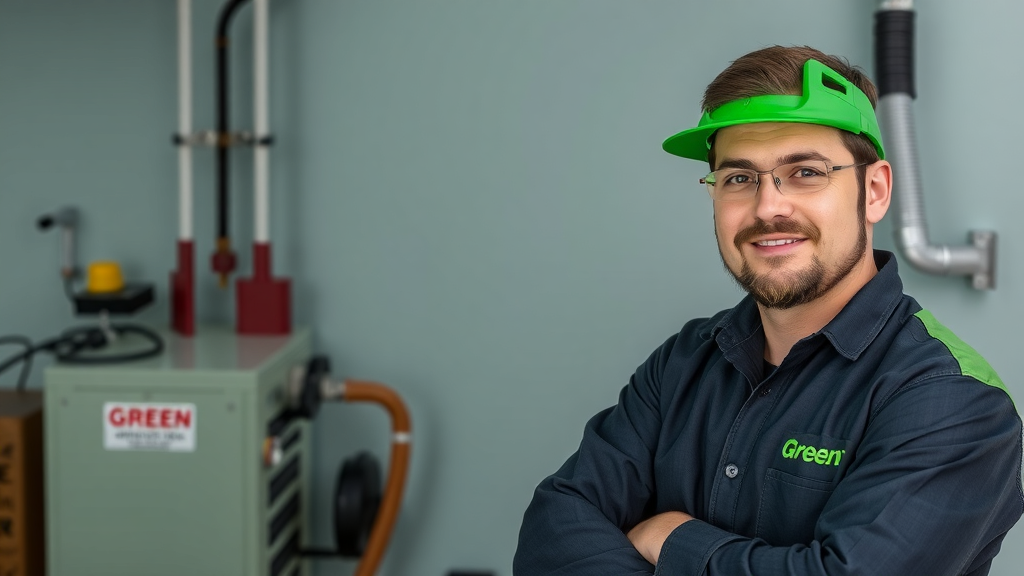
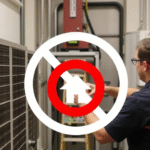
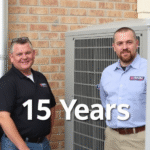
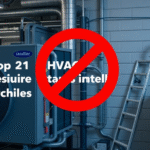
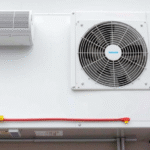
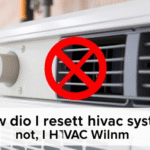
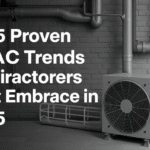
Leave a Reply